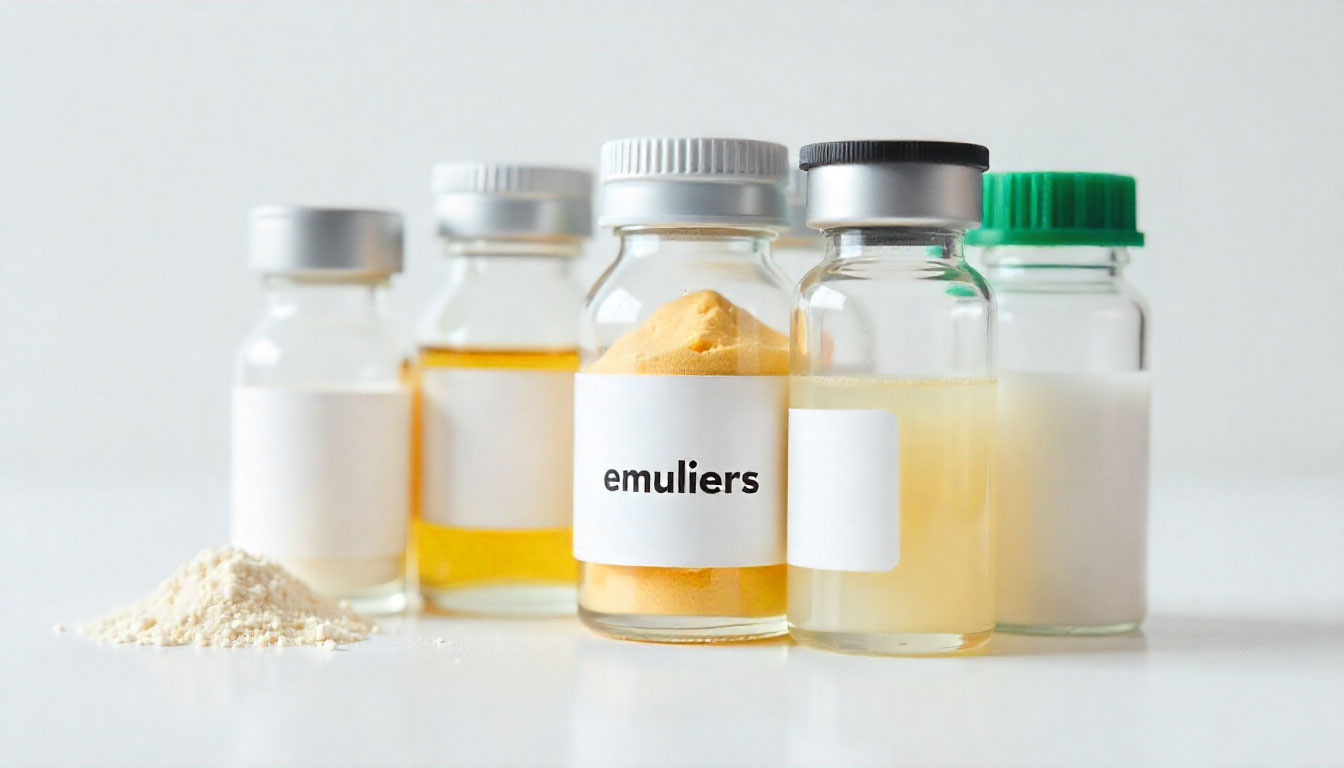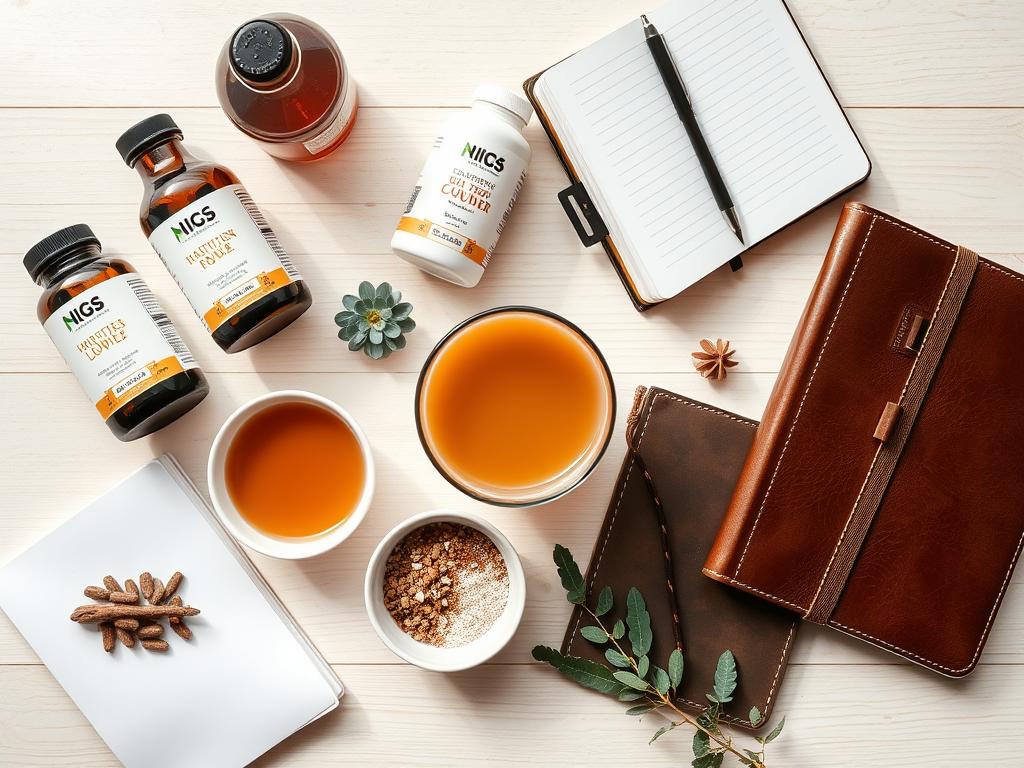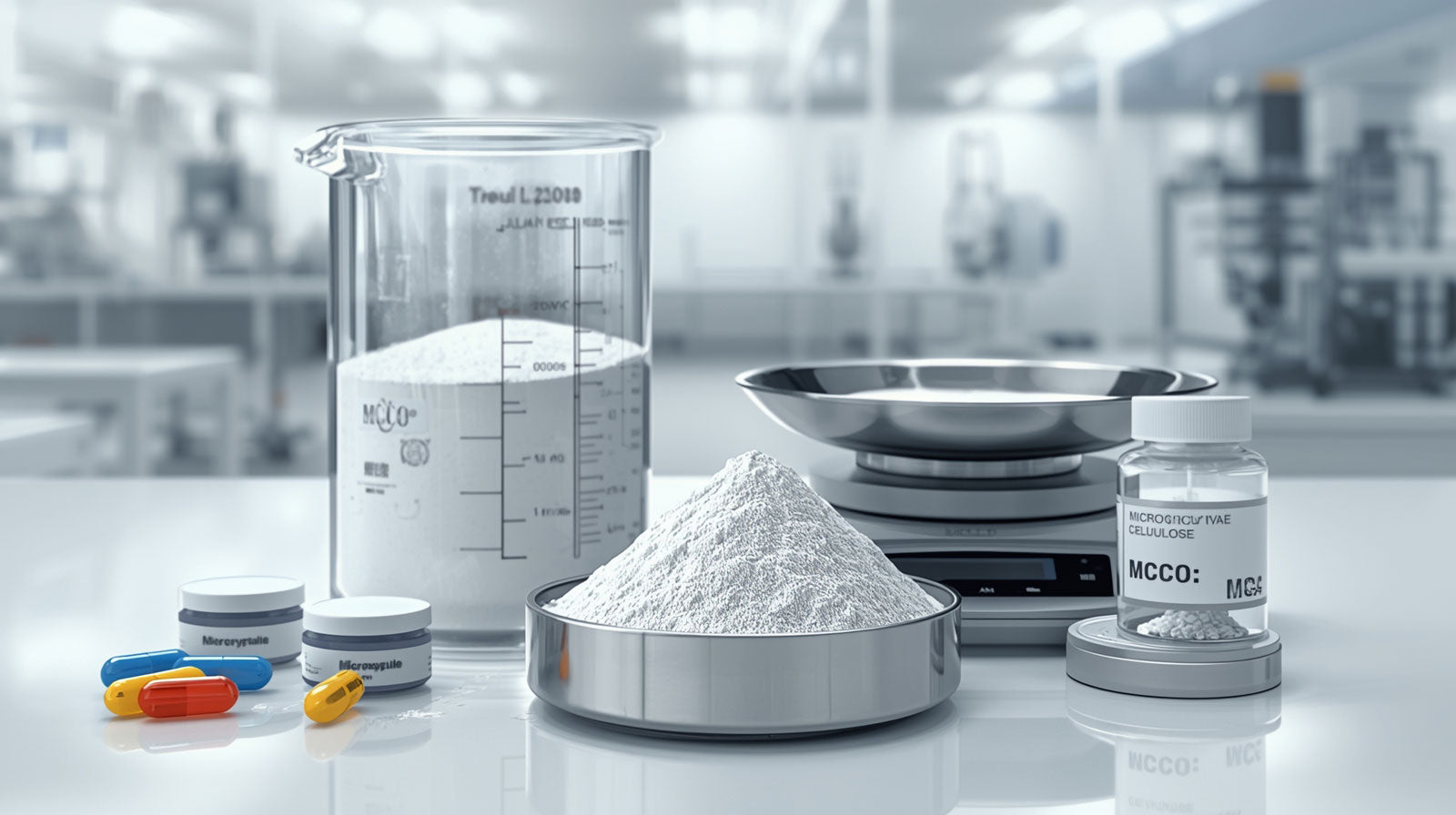
Why Is Carnauba Wax in My Food?
SUBSCRIBE TO OUR BLOG
Promotions, new products, and recipes.
Have you ever wondered why carnauba wax is listed as an ingredient in some of the food products you consume? The answer lies in this wondrous wax's unique properties that make it an ideal ingredient for various food applications.
Also known as Copernicia cerifera wax, carnauba wax is a natural substance harvested from the leaves of the Copernicia cerifera palm tree, native to northeastern Brazil. The wax is extracted, refined, and sold in several different forms for various applications.
Carnauba wax finds usage in the food industry due to its ability to enhance the texture, increase the longevity and freshness of food items, and add a glossy finish to confections. Furthermore, it is natural and non-toxic, which is a significant advantage over synthetic oligomers commonly used in food formulations.
This section will discuss the various benefits and properties of carnauba wax, its production process, and its applications. We'll also address concerns about its safety and delve into its versatility beyond the food industry.
Key Takeaways:
- Carnauba wax is a versatile natural substance used in various food applications due to its unique properties that provide a glossy finish, enhance texture, and increase the longevity of food items.
- Extracted from the leaves of the Copernicia cerifera palm tree, carnauba wax is a natural and non-toxic ingredient that has found applications across various industries.
- Carnauba wax is sustainable and can be sourced responsibly, making it an eco-friendly option for food and non-food products alike.
What is Carnauba Wax?
Carnauba wax is a natural wax derived from the leaves of the Copernicia cerifera palm tree. This tree is native to Brazil and grows in the northeastern states of the country. The wax is extracted from the leaves of the tree, which are harvested and dried in the sun. Once the leaves have been dried, they are beaten to loosen the wax, which is then refined into a usable form.
The refining process involves melting the wax and filtering it to remove any impurities. The resulting wax is then molded into blocks or pellets for use in various applications. Carnauba wax is a hard, brittle wax that is often mixed with other waxes or oils to adjust its properties to suit specific applications.
Carnauba wax is known for its high melting point, making it ideal for use in applications where heat resistance is required. It is also valued for its glossy finish, making it a popular ingredient in the production of confectionery, such as candy and chocolate. In addition to food applications, carnauba wax is widely used in the cosmetics and pharmaceutical industries, as well as in automotive and furniture polishes.
Enhancing Texture and Shine
Carnauba wax is a popular ingredient in the food industry, especially in confections. Its application as a coating for candies provides a protective layer that prevents melting and sticking. In addition to protecting the candy, carnauba wax gives it a glossy finish, enhancing its appearance.
The use of carnauba wax in confectionery is not limited to candies. It is also a key ingredient in other food products, such as chewing gum and chocolate. In chewing gums, for example, carnauba wax is used as a softener and thickening agent. In chocolate, carnauba wax is used in the polishing process, giving the chocolate a shiny appearance.
Moreover, carnauba wax is a useful ingredient for enhancing the texture of food products. Its application gives confections a smooth, polished surface with a slight crunch. Overall, carnauba wax is a versatile ingredient that has valuable applications in the food industry.

Increasing Longevity and Freshness
Carnauba wax has numerous benefits that extend beyond its ability to enhance texture and shine. One of the most significant uses of carnauba wax is to increase the longevity and freshness of certain food items, particularly fresh fruits.
When applied in a thin coating, carnauba wax forms a protective barrier that shields the fruit from air and moisture, preventing early spoilage and mold growth. Additionally, carnauba wax's moisture-resistant properties can help maintain the fruit's appearance, slowing any wrinkling or wilting.
Due to its natural origin, carnauba wax is a safe and non-toxic alternative to synthetic preservatives, making it an ideal choice for prolonging the shelf life of perishable produce.
By using carnauba wax to increase the longevity and freshness of food, consumers can reduce food waste, enjoy fresher produce for longer, and contribute to more sustainable practices.
Coating for Hard Cheeses
Aside from its uses in the food industry, carnauba wax is also widely utilized in the preservation of hard cheeses.
When applied as a coating, the wax serves as a barrier to protect the cheese from moisture, air, and mold growth. This protective layer helps to maintain the texture and flavor of the cheese over time, preventing it from drying out or becoming stale.
Carnauba wax, being a natural ingredient, is a preferable alternative to synthetic coatings that may contain harmful chemicals or additives. Its non-toxic and non-allergenic properties make it a safe and natural option for use in food products.
To apply the wax coating, the cheese is first treated with a preparation to create a smooth surface. Then, the wax is melted and carefully brushed onto the cheese in an even layer. As the wax cools and solidifies, it forms a hard and glossy coating that effectively preserves the cheese.

Examples of Cheeses Coated with Carnauba Wax
| Cheese | Origin | Notes |
|---|---|---|
| Gouda | Netherlands | The wax coating helps to maintain the distinctive nutty flavor and smooth texture of the cheese. |
| Cheddar | United Kingdom | The wax-coated cheese can last for up to two years, during which time it becomes sharper and more complex in flavor. |
| Manchego | Spain | The wax coating protects the cheese from oxidation and contributes to its characteristic caramel sweetness. |
Overall, the use of carnauba wax as a coating for hard cheeses is a natural and effective way to preserve these beloved dairy products for extended periods.
Natural and Safe Ingredient
There may be concerns about consuming carnauba wax, but it is a natural and safe ingredient used in various food products. Regulatory authorities consider it safe for consumption, and it is non-toxic and non-allergenic. In fact, carnauba wax benefits the foods it's used in by prolonging their shelf life, enhancing texture, and protecting them from melting or mold growth.
With its natural origin and safe properties, carnauba wax has become a popular alternative to synthetic wax coatings and preservatives. It's an eco-friendly solution to maintaining the quality of food products without compromising safety or flavor. Plus, carnauba wax production is sustainable, supporting responsible sourcing practices and protecting the environment.
In summary, carnauba wax is a versatile and beneficial ingredient that offers texture, shine, and longevity enhancements to various foods while being natural, safe, and sustainable. So next time you see carnauba wax on your food product label, rest assured that it's a healthy and eco-conscious choice.
Versatile Applications Beyond Food
Carnauba wax finds many uses outside of the food industry, owing to its unique properties. One of its most common applications is in automotive and furniture polishes, where it provides a protective coating and a glossy finish. Additionally, carnauba wax is a popular ingredient in cosmetic and personal care products, including lip balms, hand creams, and sunscreens, due to its moisturizing and emollient qualities. Its water-repellent properties also make it a valuable component in certain pharmaceutical formulations.
One interesting application of carnauba wax is in the production of carbon paper. A thin coating of the wax is applied to the back of the paper, allowing for a carbon copy to be made without the use of a messy ink ribbon. Carnauba wax is also used as a release agent in plastics molding, helping to prevent sticking and enabling easy removal of finished products from molds.
Check out the table below for a quick overview of some common applications for carnauba wax:
| Application | Description |
|---|---|
| Automotive and furniture polishing | Carnauba wax provides a protective coating and glossy finish. |
| Cosmetic and personal care products | Carnauba wax is used for its moisturizing and emollient properties. |
| Pharmaceuticals | Carnauba wax is often used as a water-repellent component in certain formulations. |
| Carbon paper | Carnauba wax is applied as a thin coating on the back of paper to allow for carbon copies to be made. |
| Plastic molding | Carnauba wax acts as a release agent to prevent sticking and enable easy removal of finished products from molds. |
Production and Sustainability
As mentioned earlier, carnauba wax is derived from Copernicia cerifera palm tree leaves, which are widely found in northeastern Brazil. The wax production process begins with harvesting mature leaves, followed by separating the wax from the leaves.
The production of carnauba wax is a slow process, with one tree typically yielding around 1-3 kg of wax per year. Consequently, the commercial demand for carnauba wax poses potential risks to the environment and the communities that live nearby. To ensure sustainable production, growers, producers, and traders need to follow best practices in carnauba wax production, including ethical work conditions, fair wages for farmers, and reforestation programs.
Carnauba wax is produced through eco-friendly means and is biodegradable, making it an excellent alternative to synthetic waxes produced from petroleum. Ethical harvesting and sustainable production promote the long-term preservation of the carnauba wax industry while preserving the livelihoods of the people involved.
Conclusion
In conclusion, carnauba wax is a natural and safe ingredient that has a wide range of versatile applications in the food, automotive, cosmetic, and pharmaceutical industries. Its unique properties make it an ideal choice for enhancing texture and shine, increasing longevity and freshness, and providing a protective coating for various products.
Moreover, the production process of carnauba wax is sustainable, with responsible sourcing practices ensuring the preservation of this valuable natural resource.
Consumers can rest assured that carnauba wax is a non-toxic and non-allergenic ingredient, making it a popular choice for use in many products.
It's easy to see why carnauba wax is a valuable ingredient in many products. Its versatility, safety, and natural origin make it a popular choice for a variety of applications. Keep an eye out for products that contain carnauba wax, and enjoy the many benefits that this natural ingredient has to offer.
FAQ
Why is carnauba wax used in food?
Carnauba wax is used in food for various reasons. It is a natural wax derived from the leaves of the Copernicia cerifera palm tree native to Brazil. It is added to food products to enhance texture, add shine, and prevent melting. It also forms a protective coating on candies, prevents mold growth on fresh fruits, and extends the freshness of perishable items. Additionally, carnauba wax is used as a coating for hard cheeses to preserve their flavor and texture.
What is carnauba wax?
Carnauba wax is a natural wax derived from the leaves of the Copernicia cerifera palm tree. It is a hard and brittle wax that is commonly used in various industries, including food, cosmetics, and automotive. The wax is obtained by collecting and drying the leaves, followed by the extraction process to obtain the pure wax.
How does carnauba wax enhance texture and shine in food products?
Carnauba wax is added to food products to enhance their texture and provide a glossy shine. It forms a protective coating on candies and confections, preventing them from melting. The wax also adds a smooth and shiny finish to chocolates and other confectionery items, making them more visually appealing.
How does carnauba wax increase longevity and freshness?
Carnauba wax is used to increase the longevity and freshness of certain food items. It forms a protective coating on fresh fruits, preventing moisture loss and extending their shelf life. The wax also acts as a barrier against mold growth, preserving the quality of the fruits for a longer period.
Why is carnauba wax used as a coating for hard cheeses?
Carnauba wax is used as a coating for hard cheeses to preserve their texture, flavor, and prevent moisture loss. The wax forms a protective barrier, keeping the cheese from drying out and maintaining its freshness. It also helps in preventing mold growth and extending the shelf life of the cheese.
Is carnauba wax safe to consume?
Yes, carnauba wax is considered safe for consumption. It is a natural ingredient derived from the leaves of the Copernicia cerifera palm tree. Regulatory authorities have approved its use in food products. It is non-toxic, non-allergenic, and does not pose any known health risks when consumed in moderation.
What are the other applications of carnauba wax?
Besides its use in the food industry, carnauba wax is widely used in various other applications. It is used in automotive and furniture polishes to provide a glossy finish and protection. It is also used in cosmetic and personal care products like lip balms, lipsticks, and hair waxes for its emollient and texturizing properties. Additionally, carnauba wax is used as a component in certain pharmaceutical formulations.
How is carnauba wax produced and is it sustainable?
Carnauba wax is produced by collecting the leaves of the Copernicia cerifera palm tree and drying them. The dried leaves are then beaten to remove the wax, which is subsequently refined and processed into usable forms. The sustainability of carnauba wax production is promoted through responsible sourcing practices and efforts to support the conservation of the palm tree species. It is crucial to prioritize sustainable production methods to protect the environment and ensure the long-term availability of this valuable natural resource.
What are the key takeaways about carnauba wax in food products?
Carnauba wax is a natural wax derived from the leaves of the Copernicia cerifera palm tree. It is used in food products to enhance texture, provide shine, increase longevity, and maintain freshness. It is a safe and versatile ingredient, widely used in the food industry and various other sectors. The production of carnauba wax is carried out through responsible practices to ensure sustainability and preserve the environment.

|
About the Author Ed is the founder of Cape Crystal Brands, editor of the Beginner’s Guide to Hydrocolloids, and a passionate advocate for making food science accessible to all. Discover premium ingredients, expert resources, and free formulation tools at capecrystalbrands.com/tools. — Ed |
Enjoyed this post? Subscribe to The Crystal Scoop
Food-science tips, ingredient know-how, and recipes. No spam—unsubscribe anytime.
- Choosing a selection results in a full page refresh.







3 comments
Darlene Drumm
YES! I am ALLERGIC TO CARNAUBA WAX – I had a Dermatology "SCRATCH TEST on my back- by my Deramtoligist who I trust & respect a great deal. I am allergic to Carnaba Wax.
Proof Positive. I get a red, itchy rash if I am exposed to Carnuba Wax.I use Atarax, a medication to fight the horrible itchy rash.
Chef Edmund
The claim about the potential side effects of Carnauba Wax by New Directions Aromatics doesn’t appear to be directly backed by cited studies or scientific research within the information they provide. Often, such claims are based on customer feedback, historical use, or broader industry knowledge regarding reactions some individuals may have to various substances. For definitive evidence or studies, it would be necessary to consult scientific literature or medical research databases directly.
Allergies to carnauba wax are considered extremely rare. Most people consume foods containing carnauba wax without any adverse reactions. However, as with any food ingredient, it is possible for an individual to have a sensitivity or allergy to carnauba wax, though such cases are uncommon. Symptoms of a food allergy can range from mild (such as hives, itching, or gastrointestinal discomfort) to severe (such as anaphylaxis).
If someone suspects they have an allergy to carnauba wax or experiences adverse reactions after consuming products containing it, it’s important for them to consult with a healthcare provider for a proper diagnosis and management plan.
For specific information on allergies and sensitivities to carnauba wax in food, consulting a medical professional or an allergist is always the best approach, as they can provide personalized advice and testing if necessary.
Sue